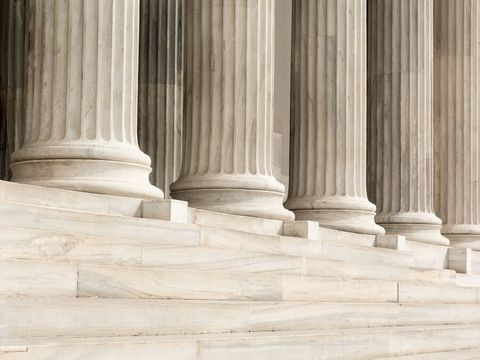NLRB Releases New Joint Employer Rule
Client Alert | 1 min read | 03.02.20
This week, the National Labor Relations Board (NLRB or the “Board”) released its final regulation defining when two employers will be considered joint employers for purposes of the National Labor Relations Act (NLRA). It clarifies that an employer must have “direct and immediate” control of another employer’s employees in order for a joint employment relationship to be formed, restoring the longstanding definition of “joint employment” that was in place before the Board’s August 2015 decision in Browning-Ferris Industries, 362 NLRB 1599. The new rule should relieve some anxiety of certain businesses, particular companies in the franchise industry and companies that make regular use of subcontractors, because it effectively raises the threshold for what must be shown to establish a “joint employment” relationship.
The rule states that, to be a joint employer, a business must “possess and exercise substantial direct and immediate control over one or more essential terms and conditions of employment” of another employer’s employees. It further defines “direct and immediate control” with respect to the key areas of wages, benefits, hours of work, hiring, discharge, discipline, supervision, and direction.
This rule is important for employers of both unionized and non-unionized employees. Employees of non-union businesses have broad rights to organize and engage in related protected, concerted activity under the NLRA, and Section 8 of the NLRA prohibits interference with organizing activity. A joint employer finding typically means that both employers are liable for unfair labor practices committed by the other.
The rule will take effect April 27, 2020. However, it has already faced criticism from Democratic lawmakers, labor unions, and worker advocates, and litigation to limit or block the rule seems likely. We will continue to monitor developments in this area.
Contacts
Insights
Client Alert | 5 min read | 12.12.25
Eleventh Circuit Hears Argument on False Claims Act Qui Tam Constitutionality
On the morning of December 12, 2025, the Eleventh Circuit heard argument in United States ex rel. Zafirov v. Florida Medical Associates, LLC, et al., No. 24-13581 (11th Cir. 2025). This case concerns the constitutionality of the False Claims Act (FCA) qui tam provisions and a groundbreaking September 2024 opinion in which the United States District Court for the Middle District of Florida held that the FCA’s qui tam provisions were unconstitutional under Article II. See United States ex rel. Zafirov v. Fla. Med. Assocs., LLC, 751 F. Supp. 3d 1293 (M.D. Fla. 2024). That decision, penned by District Judge Kathryn Kimball Mizelle, was the first success story for a legal theory that has been gaining steam ever since Justices Thomas, Barrett, and Kavanaugh indicated they would be willing to consider arguments about the constitutionality of the qui tam provisions in U.S. ex rel. Polansky v. Exec. Health Res., 599 U.S. 419 (2023). In her opinion, Judge Mizelle held (1) qui tam relators are officers of the U.S. who must be appointed under the Appointments Clause; and (2) historical practice treating qui tam and similar relators as less than “officers” for constitutional purposes was not enough to save the qui tam provisions from the fundamental Article II infirmity the court identified. That ruling was appealed and, after full briefing, including by the government and a bevy of amici, the litigants stepped up to the plate this morning for oral argument.
Client Alert | 8 min read | 12.11.25
Director Squires Revamps the Workings of the U.S. Patent Office
Client Alert | 8 min read | 12.10.25
Creativity You Can Use: CJEU Clarifies Copyright for Applied Art
Client Alert | 4 min read | 12.10.25
Federal Court Strikes Down Interior Order Suspending Wind Energy Development





